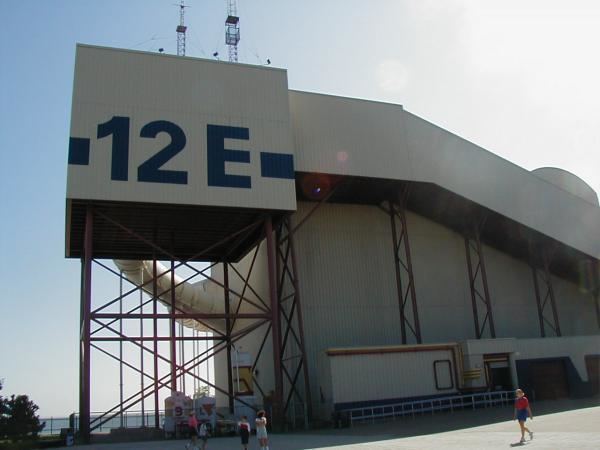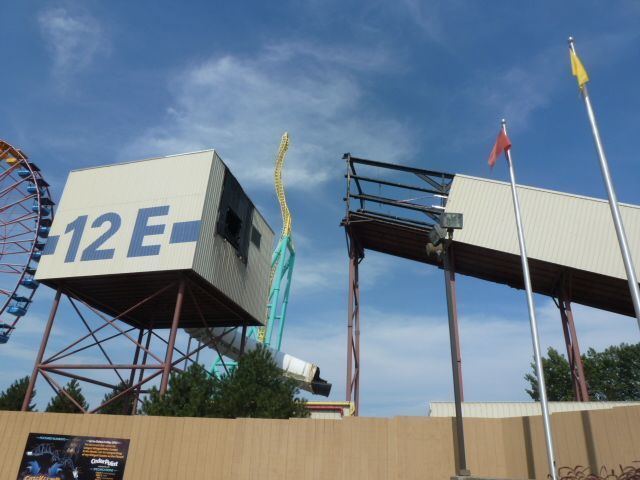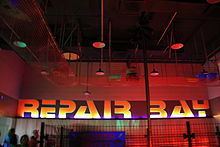Status Closed Height 19 m Max speed 64 km/h Height restriction 1.17 m | Closed 29 July 2012 Opened 11 May 1985 | |
 | ||
Opening date May 11, 1985 (1985-05-11) Closing date July 29, 2012 (2012-07-29) Cost $3,400,000 USD to build (1985)$4,000,000 USD to renovate (1990) Similar WildCat, Cedar Creek Mine Ride, Corkscrew, Iron Dragon, Gemini | ||
Disaster transport on ride cedar point
Disaster Transport (formerly Avalanche Run) was an enclosed Steel bobsled roller coaster built by Intamin at Cedar Point in Sandusky, Ohio, United States. It was notable as being the only indoor roller coaster at Cedar Point and the only bobsled roller coaster in the midwest at its debut. The name of the ride stems from "Dispatch Master Transport". The origin of the name could still be seen in the ride's logo in its later years. Before the ride was enclosed, the supports and outer sides of the track were painted blue.
Contents
- Disaster transport on ride cedar point
- cedar point disaster transport
- History
- Renovation
- Closure
- Ride experience
- Theme
- Building
- References

cedar point disaster transport
History

Disaster Transport originally opened on May 11, 1985 as Avalanche Run and was entirely outdoors. It was built next to the beach, on the former spot of Jumbo Jet and later, WildCat. Many other rides also had to be relocated. The original ride cost $3.4 million: $1.9 million to manufacture and $1.5 million to install.
Renovation

In 1990, ITEC Productions, Inc. was chosen to renovate the ride, completely enclosing it in a show building. The renovation included the addition of a space-themed queue and ride along with special effect lighting and sound. The special effects and construction cost approximately $4 million. On the outside of the building, "12 E" was written, which had caused numerous rumors as to its meanings. On August 3, 2005, it was revealed that it stood for the 12th ride designed by the ITEC employee, Eric.

Not long after the changes to the ride in 1990, the special effects began to deteriorate due to a lack of upkeep. By the time the ride closed, many of the effects were no longer active or had been covered up. Blacklight reactant paint lined the walls, mostly in the form of handprints or outlines of scenes. These gave a 3-D appearance when the rider wore special glasses purchased at the beginning of the queue.
Closure
On July 13, 2012, Cedar Point announced that Disaster Transport would close on July 29, 2012. It was the second roller coaster at Cedar Point to close in 2012. A charity auction was held for the final riders, benefiting the Give Kids the World charity foundation. The last ride was given at 11:53 PM on July 29, with the lights turned on. The ride started demolition on August 6, using about 380 trucks to transport scrap materials. A portion of track, two cars and the main entrance sign will be donated to the National Roller Coaster Museum. Less than a month later on August 29 at around 9:30 AM, the last section of Disaster Transport was demolished. The 12E part of the building was the last section left standing.
Ride experience
Disaster Transport was a bobsled roller coaster, meaning the wheels were not attached to a track as on a conventional roller coaster. The cars — resembling bobsleds — operated within a steel trough, on which they were allowed to operate freely. This allowed the ride to swing from side to side when turning sharp corners, as an actual bobsled would. Guests would enter 10 passenger bobsleds, secured by a lap bar. After leaving the "launch area", the bobsled traveled up the 63-foot-tall (19 m) lift hill at a 15-degree-angle, which featured red and blue blinking lights on the sides. After reaching the top of the lift hill, it curved to the right, dropping 50 feet (15 m) at a 27-degree-angle and reaching a top speed of 40 mph (64 km/h). After that, it curved to the left into a mid course brake run. After the mid course brake run, the bobsled turned left followed by several banked turns and curves and two more brake runs. One cycle of the ride lasted about 2 minutes and 32 seconds.
Theme
After the ride was renovated in 1990, a new space theme was given. The story of the ride was the passengers had been to deliver cargo from a suborbital factory to a station in Alaska. Large screen projections, simulated lasers, mist, and recordings were added to the ride. In the queue, guests would go through three rooms including Rocket Recovery, Mission Control and Repair Bay. The original entrance to the ride was located next to Troika. During HalloWeekends, the park would change the entrance of Disaster Transport to under the lift hill, leaving the one next to Troika to be used for the Halloween Haunt. For the 2009 season, the entrance was permanently changed to under the lift hill. When the entrance was changed, the Rocket Recovery and Mission Control rooms were closed, leaving the Repair Bay the only room guests walked through.
Building
The building was also used as a storage facility for the park. During HalloWeekends, much of the original queue area was used to house a haunt attraction. It was first used in 1997 for the haunt, Cedar Point Cemetery. In 2000, it was transformed into the Egyptian themed, Pharaoh's Secret haunted house. In 2009, it was transformed into Happy Jack's Toy Factory, a haunted toy factory.
The ride, though indoors, would close in any type of rain. Because of leaks in the structure, water pooled in the trough, warranting a shutdown. Typically, the ride would remain shut down after a period of rain as the crew would have to cycle several trains through the circuit in order for it to dry. Although the ride was enclosed, the storage track remained outdoors with a large door that opened when the storage track was needed.
